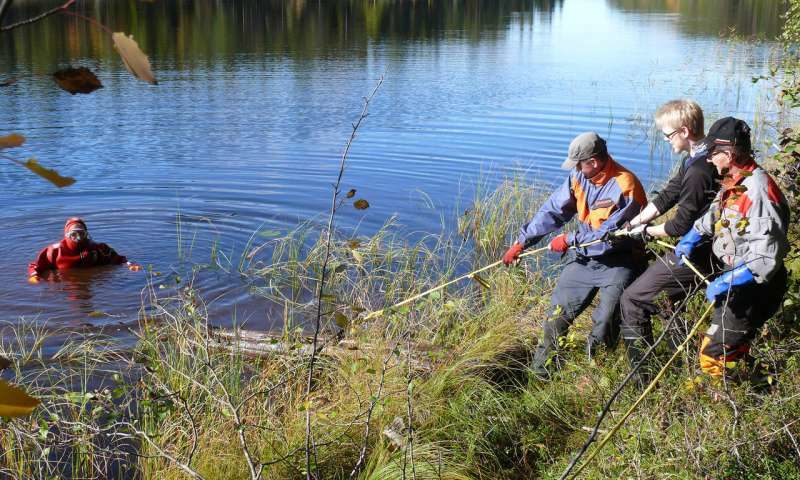
An extended period of low light makes survival difficult. Food production, including farming and animal husbandry, rely on solar energy. Humans, meanwhile, become more prone to disease if they are not exposed to enough sunlight to produce vitamin D.
"Our research shows that the climate anomaly, which covered all of the northern hemisphere, was the compound result of several volcanic eruptions," says Markku Oinonen, director of the Chronology Laboratory. The aerosols that were released into the atmosphere with the eruptions covered the sun for a long time.
Comment: Scientists believe that right now we're seeing an increase in volcanic eruptions, and they predict earthquakes will follow, because of a minute slow down in earth's rotation; they've also recently identified the Atlantic Ocean circulation is the weakest in over 1,000 years, does a similar fate lie in our future?
The exceptionally poor climate conditions were significantly detrimental to farming and reduced the production of vitamin D among the populace. This means that the people who were already weakened by hunger also had to grapple with compromised immune systems.
Trees are a record of the past
The study is based on dendrochronology or tree-ring dating. The series of annual growth rings from subfossil-or intact-tree deposits covers the past 7,600 years. The trees are often found on the bottoms of small lakes, and Luke has been taking samples and recording the findings since the 1990s.
"Researchers have put together an annual growth ring calendar of treeline pine spanning more than 7,600 years. Various historical events can be contrasted with the calendar. The growth ring calendar is an important indicator of global climate change," says researcher Samuli Helama from Luke.
The samples in the recent study were dated with the help of the growth ring calendar at Luke, and the researchers carved sample shavings out of them for each calendar year. The Chronology Laboratory then conducted isotope analyses on the samples.
The results of the study are based on the analysis of the variation of carbon isotopes in the annual growth rings of trees. The variety in carbon isotopes reflects the photosynthesis of the trees, which in turn is largely dependent on the amount of solar radiation available during the summer.
The new study tracks the correlation of carbon isotope variation and volcanic eruptions from the 19th century until recent years, and shows the dramatic reduction in available sunlight in 536 as well as between 541 and 544 CE. The variation of summer temperatures was similarly reconstructed on the basis of the density of the trees' annual growth rings.
Hard times brought the plague
The unusually poor years coincide with the bubonic plague epidemic that devastated the Roman Empire. The epidemic caused by the Yersinia pestis bacterium began in 542 CE and killed approximately half or more of the inhabitants of what was then considered the Eastern Roman Empire. The plague spread through Europe from the Mediterranean to possibly as far north as Finland, and had killed tens of millions of people by the 8th century.
Explore further: Tree rings provide vital information for improved climate predictions
More information: Samuli Helama et al, Volcanic dust veils from sixth century tree-ring isotopes linked to reduced irradiance, primary production and human health, Scientific Reports (2018). DOI: 10.1038/s41598-018-19760-w
Journal reference: Scientific Reports
Provided by: University of Helsinki
Read more at: https://phys.org/news/2018-04-unusual-climate-roman-plunged-eurasia.html#jCp



Comment: For more on the incredible happenings during that period, see:
- New Light on the Black Death: The Cosmic Connection
- Comets and meteorites on ancient coins
- Comets and the early Christian mosaics of Ravenna
- Did cometary catastrophes cause the Justinian Plague and end the Roman Empire?
- Apocalypse then: How a comet ended the Roman Empire
- The destruction of ancient Rome - The barbarians were not responsible
- Swedish study finds that earth was warmer in ancient Roman times and the Middle Ages than today
- Tree-rings prove climate was warmer in Roman and Medieval times than it is now - and world has been cooling for 2,000 years
- Early humans witnessed global cooling, warming, and massive fires from comet debris impacts says major study
- Britain's peasant houses and the Black Death building boom
Also check out SOTT radio's: